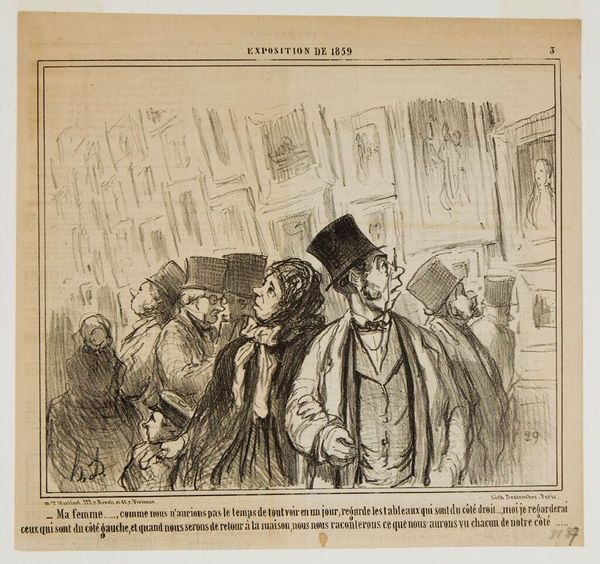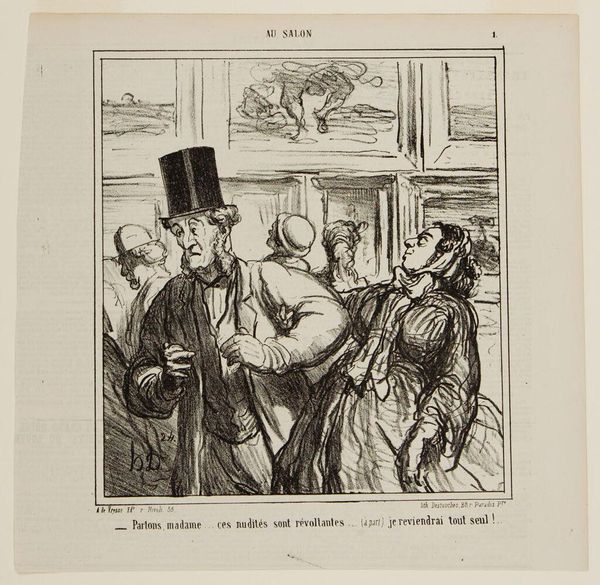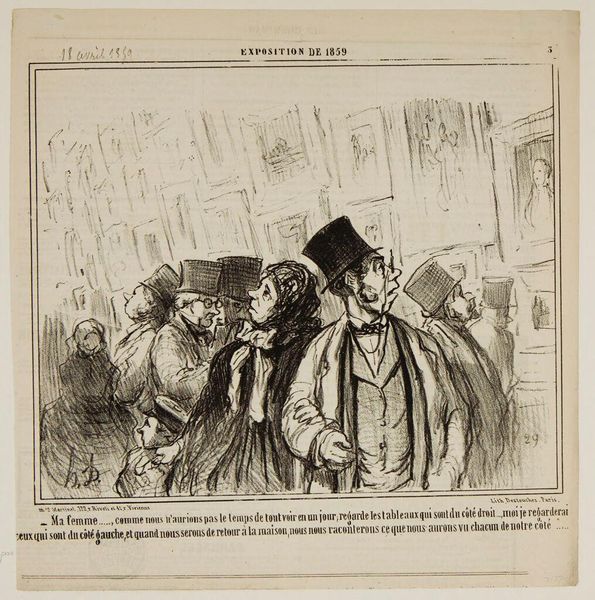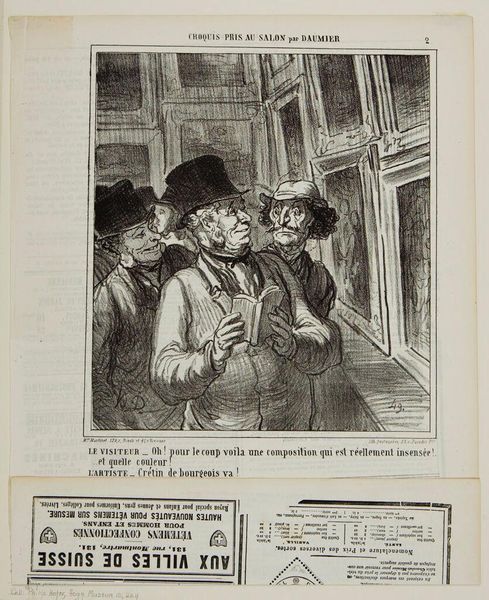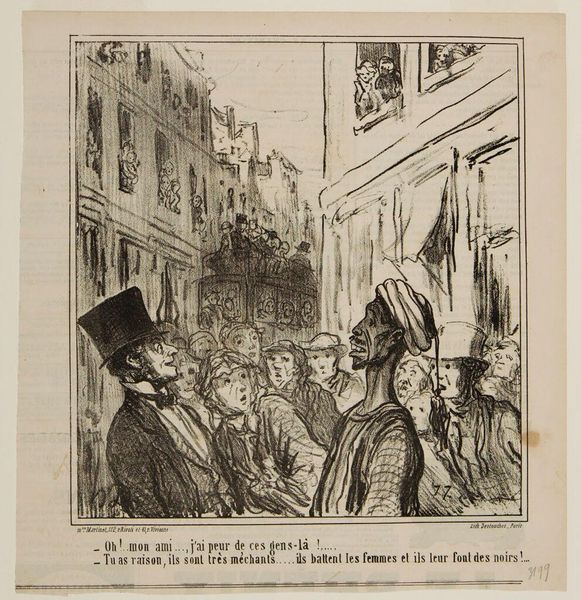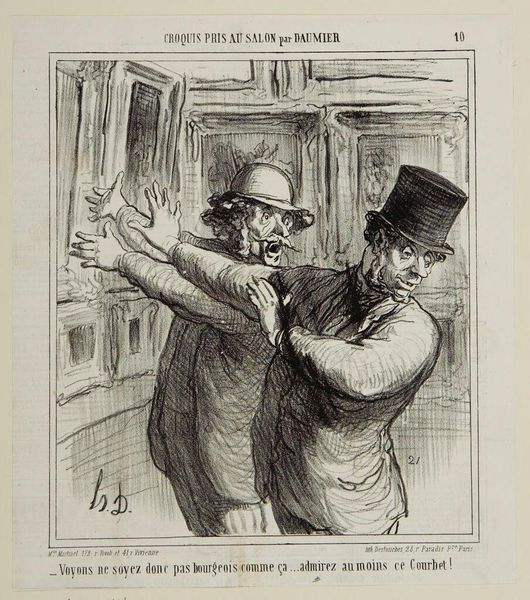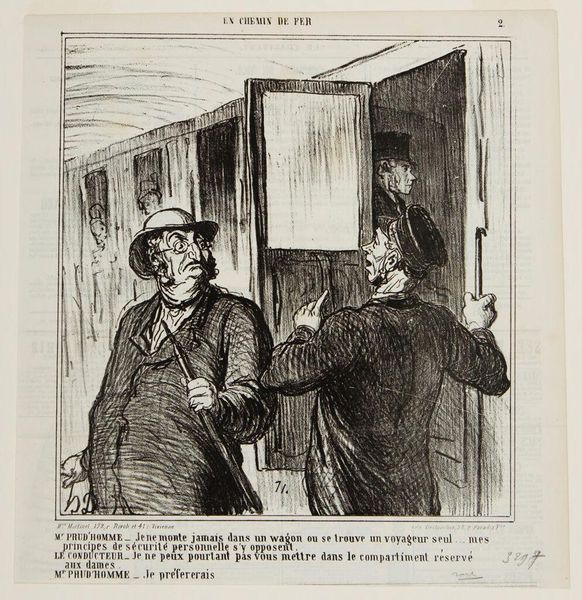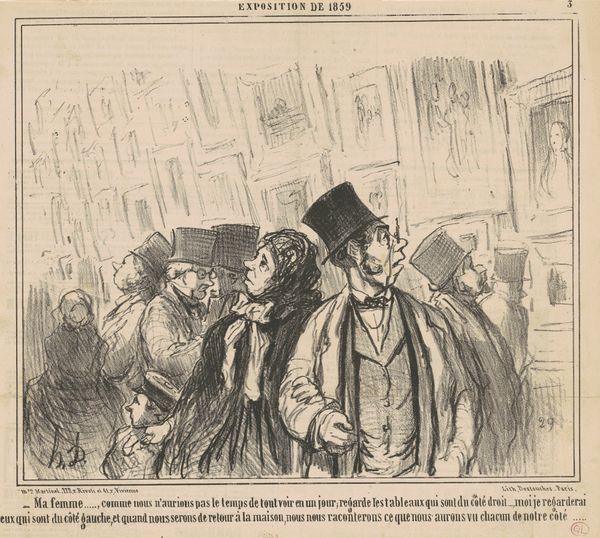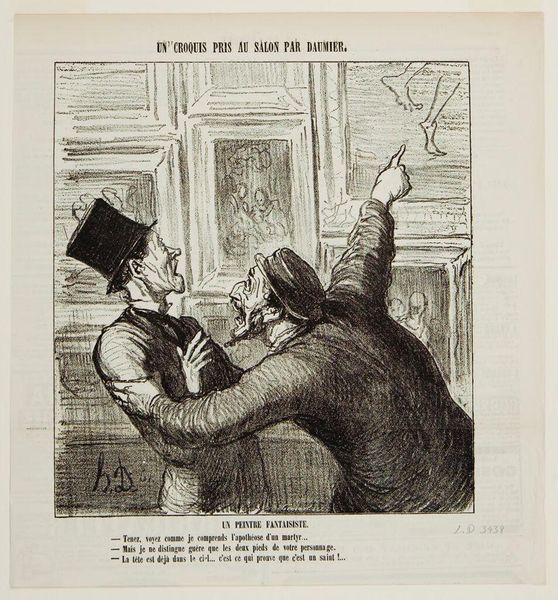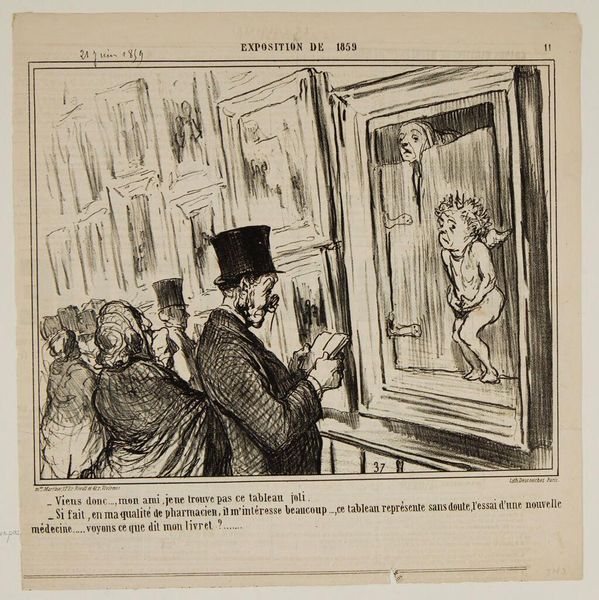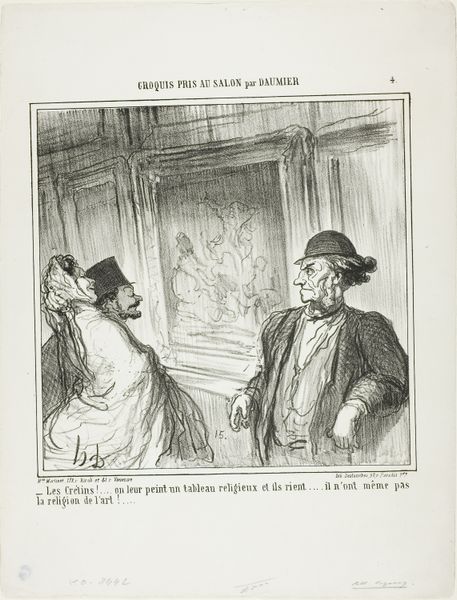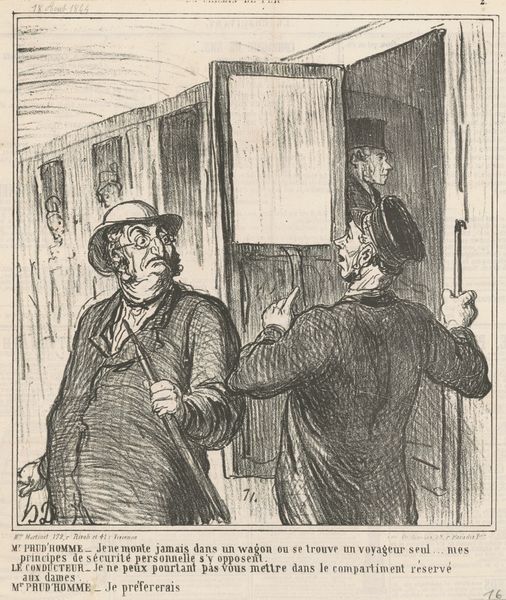
"Well, if you look at this painting really closely, you can discover certain qualities, you can see its coloring is good." 1865
0:00
0:00
Copyright: CC0 1.0
Editor: This lithograph, attributed to Honoré Daumier, seems to satirize art critics. The inscription in the lower part of the drawing reads "Well, if you look at this painting really closely, you can discover certain qualities, you can see its coloring is good." What do you see in this piece that speaks to its cultural context? Curator: I see a biting commentary on the superficiality of the art world. Daumier, a social critic, uses this image to critique the bourgeoisie's shallow understanding of art and their reliance on clichés. The act of using a magnifying glass suggests a desperate attempt to find value where perhaps there is none, reflecting the broader societal issues of class and cultural capital. What does it say about the artwork when the most obvious statement is also the most profound, and all that needs to be said? Editor: That's a great point. I didn't think about the magnifying glass as a symbol of desperation. Curator: Exactly! Considering the political climate of the time and Daumier's own background as a working-class artist, this lithograph becomes a powerful statement about the accessibility and interpretation of art for different social classes. Editor: Thanks! Now I see a deeper social commentary in it. Curator: It highlights that looking closely isn't always seeing clearly, especially when social biases cloud our judgment.
Comments
No comments
Be the first to comment and join the conversation on the ultimate creative platform.
